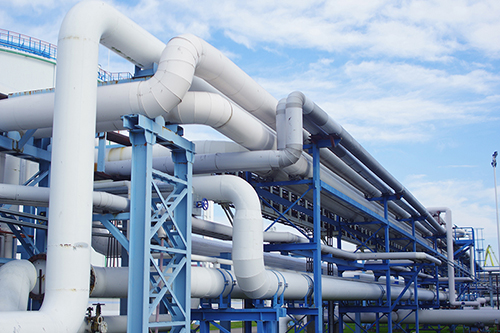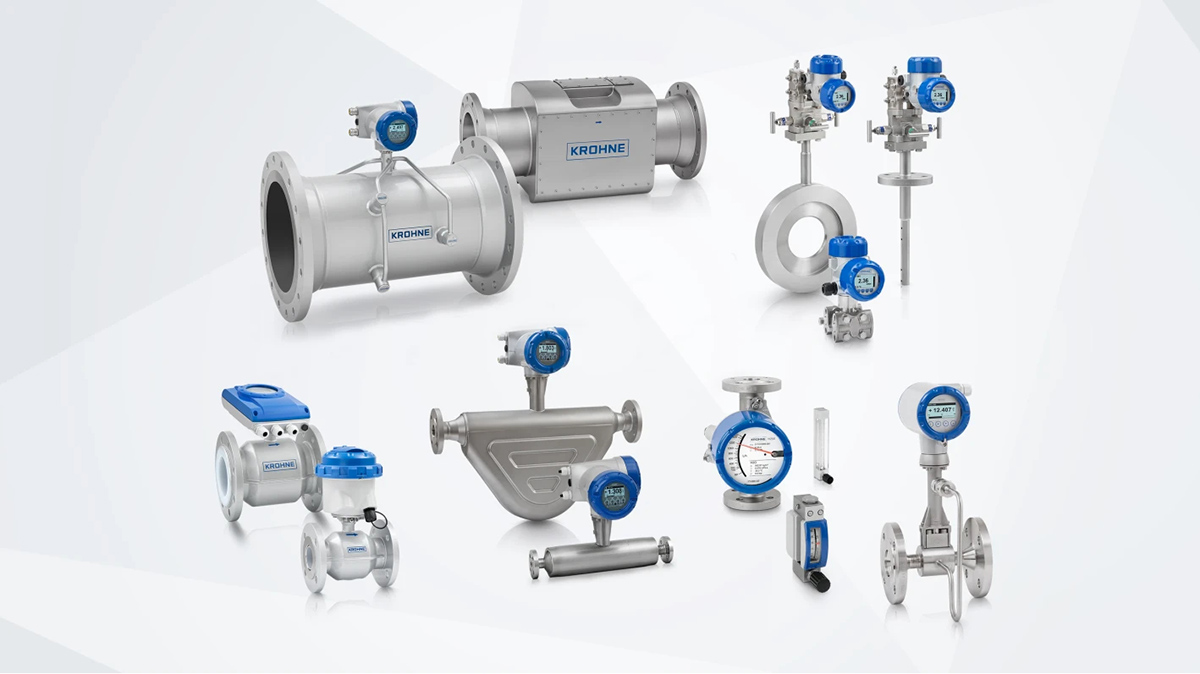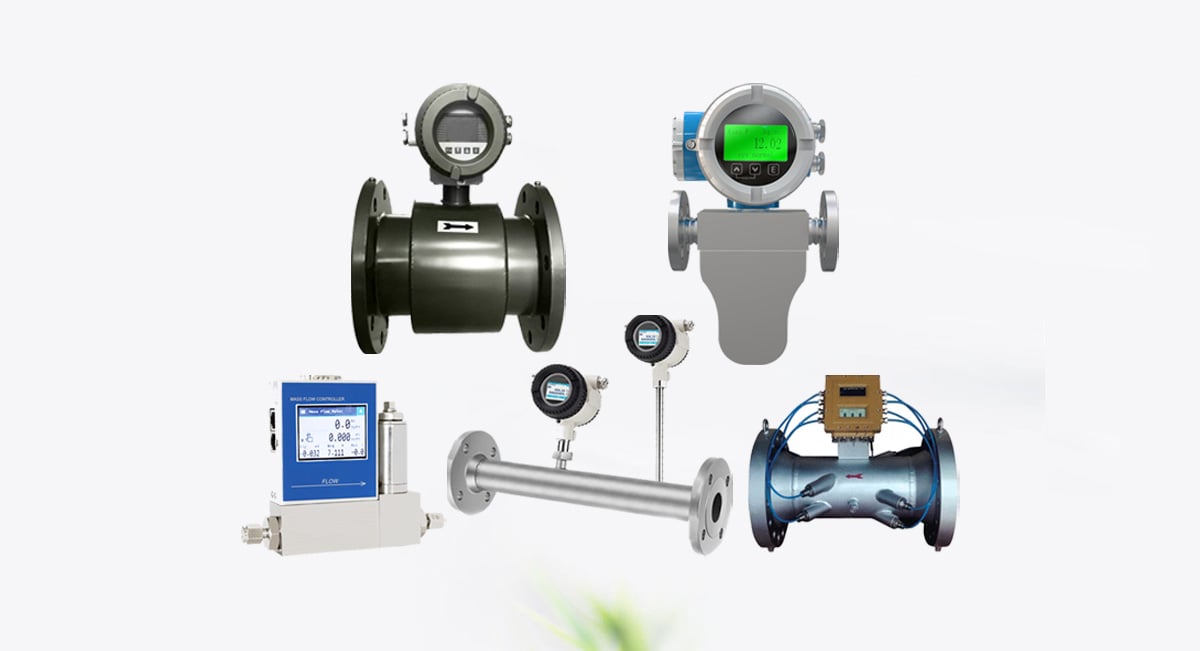Ultrasonic flowmeters are precise and reliable instruments widely used in various industrial and municipal applications. Based on their working principles, ultrasonic flowmeters are typically classified into two major types: the transit-time (time-of-flight) method and the Doppler method. By utilizing the changes in sound wave propagation time or frequency within a fluid, ultrasonic flowmeters efficiently measure flow rates, making them indispensable tools in flow monitoring.
Fundamental Principles of Ultrasonic Flowmeters
The core principle of ultrasonic flowmeters is based on the propagation characteristics of sound waves. Their sensors employ piezoelectric crystals to generate high-frequency sound waves through the inverse piezoelectric effect. These frequencies are beyond the range of human hearing, ensuring both precision and quiet operation. Sensors are typically paired, with each acting as both a transmitter and a receiver, enabling bidirectional sound wave propagation within the fluid.
Depending on the observed changes in sound wave behavior, ultrasonic flowmeters operate primarily using either the transit-time method or the Doppler method.

Transit-Time (Time-of-Flight) Method
The transit-time method determines flow velocity by analyzing the effect of fluid motion on the propagation time of sound waves. Key features and operational steps include:
- Bidirectional Sound Wave Propagation: Paired sensors emit sound waves both along and against the fluid flow direction.
- Propagation Time Difference: Sound waves traveling in the direction of the fluid flow propagate faster, while those moving against it propagate slower. The time difference increases with higher flow velocities. By measuring this time difference and combining it with the cross-sectional area of the pipe, the flow rate can be calculated accurately.
- Multiple Sensor Pairs: For applications requiring high precision, additional sensor pairs may be installed to account for variations across the pipe’s cross-section, further enhancing measurement accuracy.

Applications: The transit-time method is ideal for measuring clean liquids and gases. For fluids containing minor impurities or bubbles, specialized algorithms can mitigate their effects, making this method suitable for applications such as municipal water supply and natural gas transmission. Here’s a post about ultrasonic gas flow meter.
Doppler Method
The Doppler method is designed for fluids containing particles or bubbles and calculates flow velocity based on frequency shifts in sound waves. Its working principles include:
- Frequency Shift Principle: When sound waves encounter suspended particles or bubbles in the fluid, their frequencies shift. If the particles or bubbles move toward the sensor, the reflected sound frequency increases; conversely, the frequency decreases if they move away.
- Flow Velocity Calculation: The Doppler flowmeter determines flow velocity by measuring the frequency shift and considering the known speed of sound in the medium and the reflection angle.
- Sensor Installation: Doppler sensors are often mounted externally on the pipe, eliminating the need for drilling and making them suitable for applications like municipal wastewater systems where continuous operation is critical.

Applications: The Doppler method is particularly suited for fluids containing significant quantities of suspended solids or bubbles, such as wastewater, slurry, and pulp. Its non-intrusive design allows for reliable measurement without disrupting pipe integrity.
Sensor Installation for Ultrasonic Flowmeters
Ultrasonic flowmeter sensors offer flexible installation options, tailored to specific applications:
- Inline Sensors: Installed inside the pipe or flowmeter wall, inline sensors directly contact the fluid, providing high-accuracy measurements for demanding applications.
- Clamp-On Sensors: Mounted externally on the pipe wall, these sensors are ideal for municipal water and wastewater systems. This installation method eliminates the need for pipe drilling, reduces installation complexity, and minimizes the risk of fluid leakage.

Clamp-on sensors require pipes made of sound-conductive materials such as metals or plastics. Excessively thick or sound-absorptive pipe walls may attenuate signals, potentially impacting measurement accuracy.
Applications and Advantages
Ultrasonic flowmeters are highly versatile and are widely used across numerous industries. Typical application scenarios and advantages include:


Municipal Water Supply: Monitoring the flow of clean water with real-time, precise data provided by transit-time flowmeters.
Natural Gas Pipelines: Ensuring stable and reliable flow measurement in high-pressure and high-flow environments.


Wastewater Treatment: Measuring fluids containing particles or bubbles with Doppler flowmeters, addressing complex monitoring needs.
Chemical and Pulp & Paper Industries: Real-time monitoring of flow in particle-laden fluids such as pulp or chemical solutions using Doppler flowmeters.
Key Advantages:
- Non-Contact Measurement: Clamp-on sensors allow for non-intrusive monitoring without altering the internal structure of the pipe.
- High Accuracy and Real-Time Performance: The combination of the transit-time and Doppler methods enables precise and real-time flow monitoring for various fluid characteristics.
- Wide Adaptability: Ultrasonic flowmeters are capable of measuring clean fluids and complex mixtures, meeting the needs of diverse industries.
Conclusion
Ultrasonic flowmeters, with their advanced principles and flexible installation methods, deliver consistent and reliable flow measurement even in challenging environments such as high-pressure or high-flow systems. Whether for municipal water management, natural gas transportation, wastewater treatment, or chemical production, their diverse measurement capabilities make ultrasonic flowmeters indispensable instruments in flow monitoring.









Leave a comment